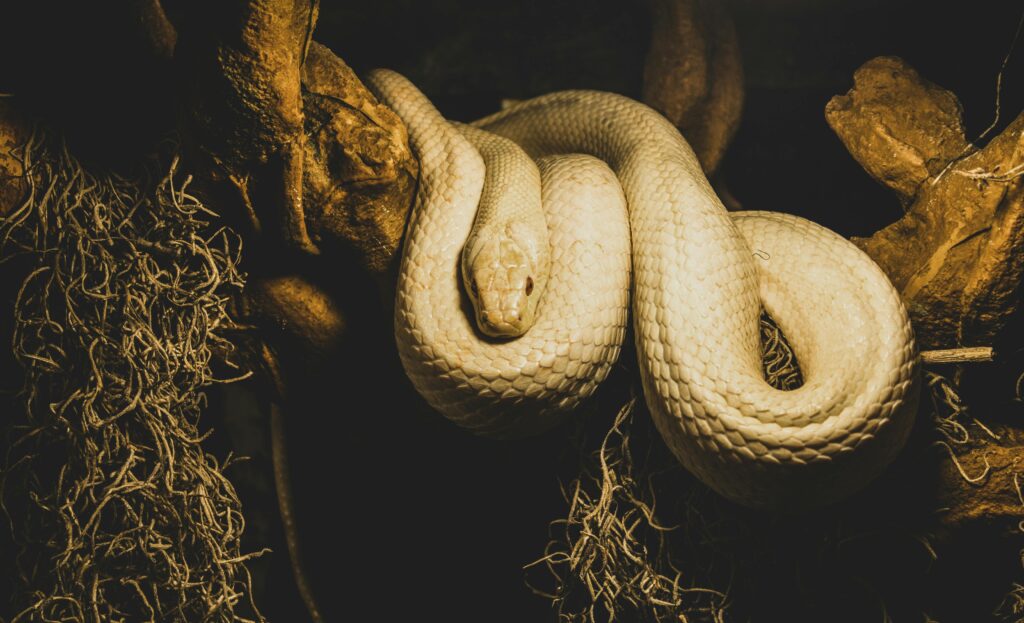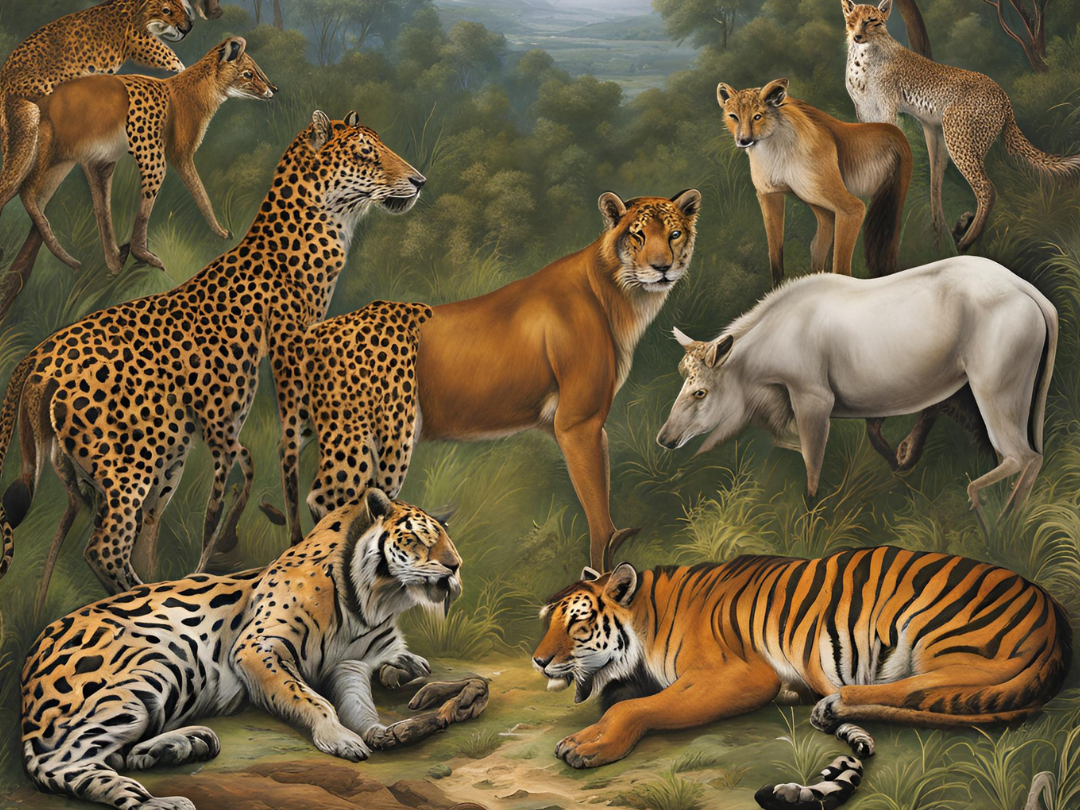Representations of Wildlife in Films, Books, and Media Over the Decades
Exotic animals have always sparked the human imagination, featuring prominently in diverse expressions of popular culture for years. They grace the screens of cinemas and pages of novels, animate television series, and even embellish advertisements, playing pivotal roles in narratives. These creatures are depicted in a myriad of ways: as regal beings, intimidating hunters, or cherished companions, influencing our perception and engagement with the wild. Their presence is enduring, shaping our cultural landscape and our relationship with the natural world.
The way exotic animals are shown in the media has greatly influenced how we see wildlife, shaping public opinions and even conservation efforts. Over time, these portrayals have changed, mirroring shifts in societal views and environmental awareness. In this article, we’ll dive into the various ways exotic animals have been depicted in popular culture and explore how these images affect our connection with the natural world.

Contents
- 1 Exotic Animals in Films and Television
- 2 Iconic Representations of Exotic Animals in Films
- 3 Symbolism and Exotic Animals in Books
- 4 Exotic Animals in Folklore and Mythology
- 5 The Impact of Exotic Animal Portrayals on Conservation
- 6 Inspiring Conservation Through Media
- 7 Misrepresentation and Its Consequences
- 8 Conclusion
Exotic Animals in Films and Television

Throughout the of film and TV, exotic animals have graced the screen in diverse roles. They’ve not only captivated audiences as main protagonists or loyal companions but also embodied the essence of enigma, thrill, or peril. Countless movies, particularly within the realms of adventure and fantasy, have harnessed these majestic creatures as pivotal components of their storytelling, whisking audiences away to the untamed and extraordinary terrains of imagination.
Iconic Representations of Exotic Animals in Films

Some of the most iconic films in history feature exotic animals in major roles. For example, the Tarzan series, dating back to the early 20th century, introduced audiences to the idea of wild animals as companions to humans, showcasing elephants, lions, and apes. Similarly, Disney’s The Lion King brought African wildlife into the hearts of millions, portraying lions, hyenas, and meerkats as complex characters with human-like emotions.
Another notable film is Jurassic Park, which, while fictional, captivated audiences with its depictions of ancient, exotic species such as dinosaurs. The film combined awe and fear, illustrating the powerful allure of exotic creatures while also addressing ethical concerns around humans interacting with them. These depictions often walk a fine line between entertainment and exaggeration, sparking curiosity but sometimes promoting stereotypes about wildlife.
Wildlife as Villains or Heroes?

Exotic animals are often cast either as dangerous predators or as noble creatures in need of protection. Films like Jaws or Anaconda lean into the fearsome portrayal of animals, depicting them as threats to human life. These films have contributed to lasting misconceptions about certain species, fostering fear rather than understanding.
On the flip side, films such as “Born Free,” which tells the true story of a lioness, and “Dolphin Tale,” highlight the valor and purity of animals. These movies have been instrumental in changing the way we view animals, steering us towards conservation and compassion. They inspire audiences to recognize these beings as essential components of our ecosystem, meriting our care and safeguarding
Exotic Animals in Literature

Books have significantly influenced the perception of exotic animals throughout history. They have been pivotal in literature, from timeless classics to enchanting children’s tales, where wildlife is often depicted as symbols representing broader concepts such as liberty, authority, or humanity’s bond with the natural world. These narratives have not only entertained but also educated readers, subtly weaving in the importance of understanding and preserving our planet’s diverse fauna.
Symbolism and Exotic Animals in Books

Exotic animals often grace the pages of literature, serving as powerful symbols of the untamed aspects of nature and the tension between the civilized world and the wilderness. Take Joseph Conrad’s “Heart of Darkness” as an instance; the African wildlife that populates its pages is not just a backdrop but a critical element that accentuates the novel’s exploration of imperialism and the enigmatic depths of the unknown. In a parallel vein, Yann Martel’s “Life of Pi” doesn’t merely feature a Bengal tiger as a companion in survival; it delves into the profound layers of survival, spirituality, and the intricate dance of human-animal relationships. These narratives invite readers to ponder the profound connections and the often blurred lines between humanity and the animal kingdom.
Children’s books, like Rudyard Kipling’s The Jungle Book, introduce younger audiences to exotic animals in a more approachable, often whimsical manner. Through characters like Baloo the bear and Bagheera the panther, these stories teach lessons about friendship, bravery, and coexistence with nature.
Exotic Animals in Folklore and Mythology

Exotic animals have been central to mythology and folklore across cultures for centuries. Creatures like dragons, phoenixes, and serpents have often been based on real-life animals, with their characteristics exaggerated to symbolize power, wisdom, or danger. These mythical representations continue to influence modern media, from fantasy films to video games.
In many indigenous cultures, exotic animals like jaguars, eagles, and snakes hold spiritual significance. These animals are often revered as guardians or symbols of natural forces,and their portrayal in popular media often reflects this deep cultural connection.
The Impact of Exotic Animal Portrayals on Conservation

The way exotic animals are portrayed in popular culture can have significant consequences for conservation efforts. Positive portrayals can raise awareness and inspire action to protect endangered species, while negative or inaccurate depictions can fuel misconceptions that hinder conservation goals.
Inspiring Conservation Through Media
Cinematic works such as “The Elephant Queen” and “March of the Penguins” have been instrumental in bringing to light the plight of exotic wildlife. These films, by capturing the essence of these animals in their untamed environments and their fight against ecological dangers, have sparked a global interest in conservation. This surge of awareness has translated into heightened efforts to safeguard wildlife.
Documentaries serve as a vital educational tool, revealing the authentic existence of exotic fauna. Series like “Planet Earth” and “Blue Planet” provide a close-up view of the animal kingdom, igniting a sense of awe and a duty to protect these magnificent beings. Through these visual narratives, viewers are not only informed but also motivated to contribute to the preservation of our planet’s diverse species
Misrepresentation and Its Consequences

Unfortunately, not all portrayals of exotic animals are beneficial. Films that depict animals as dangerous or monstrous can lead to public misunderstanding and even harm certain species. For instance, the film Jaws led to widespread fear of sharks, contributing to their decline due to human actions like overfishing and hunting.
Exotic animals are also often featured as pets in films, which can lead to a surge in demand for them in real life. Movies like Finding Nemo and Rio inadvertently sparked an increase in the illegal pet trade for species like clownfish and parrots, despite their messages of conservation.
Conclusion
Exotic animals have played diverse and influential roles in popular culture, from awe-inspiring heroes to misunderstood villains. These portrayals not only shape our perceptions of wildlife but also influence how we interact with and care for these creatures in the real world. While media representations can inspire conservation efforts, they also carry the risk of promoting harmful stereotypes or unsustainable practices.
As viewers and readers, it’s important to engage critically with how exotic animals are portrayed and consider the real-world implications of these depictions. By doing so, we can help ensure that these fascinating creatures continue to thrive—both in their natural habitats and in the stories we tell.




